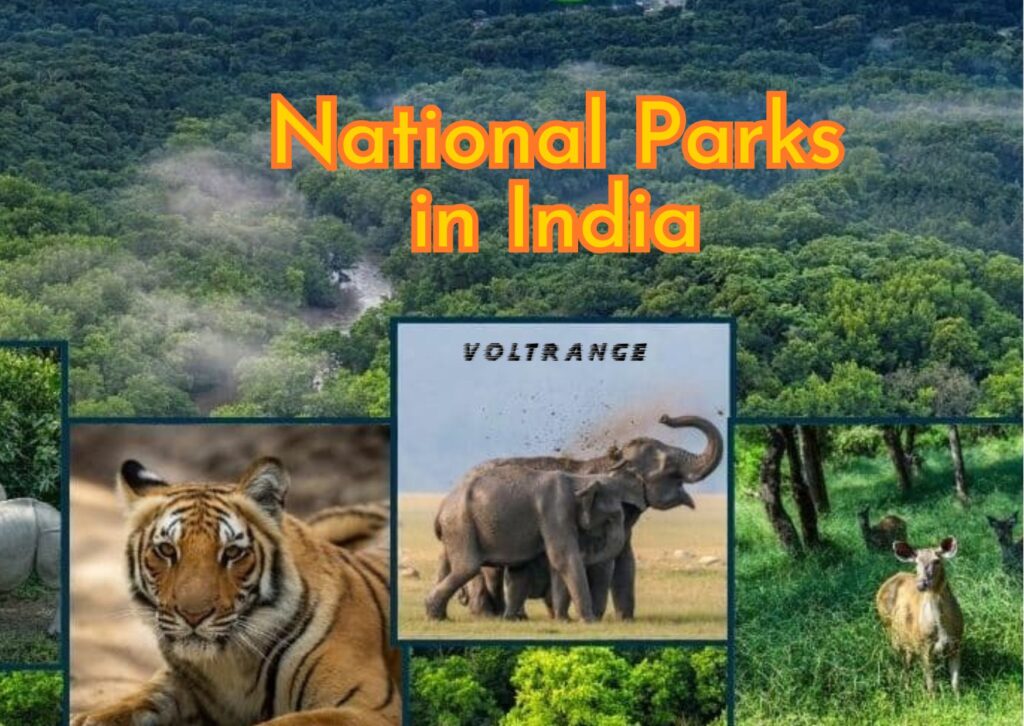
Biggest National Parks in India
India is home to a staggering 106 national parks, a testament to the country’s commitment to preserving its diverse flora and fauna. Among these, some parks stand out not just for their biodiversity but also for the vast areas they cover. In 2024, let’s take a closer look at the ten largest national parks in India, each unique in its own right. So, let’s dive in!
1. Hemis National Park, Jammu and Kashmir
Kicking off our list is Hemis National Park, the largest national park in India, sprawling across 4,400 square kilometers. Nestled in the high altitudes of the Himalayas, it’s renowned for being a crucial sanctuary for the endangered snow leopard. The park’s landscape is a stunning mix of lush valleys and high-altitude deserts, making it a haven for other species like the Tibetan wolf, Eurasian brown bear, and red fox. A visit to Hemis is a journey into the heart of Himalayan wildlife conservation.
2. Desert National Park, Rajasthan
Next, we move to Rajasthan, home to the expansive Desert National Park. Covering 3,162 square kilometers, this park showcases the harsh beauty of the Thar Desert. Despite the challenging conditions, it is a biodiversity hotspot, famously hosting the critically endangered Great Indian Bustard. With its endless sand dunes and sparse scrublands, Desert National Park plays a crucial role in maintaining the ecological balance of the desert region.
3. Gangotri National Park, Uttarakhand
Gangotri National Park, covering 2,390 square kilometers, is not just a biodiversity hub but also a place of spiritual significance, as it houses the origin of the sacred River Ganges. The park’s diverse habitats range from icy alpine meadows to lush subalpine forests. It’s home to species such as the Himalayan tahr and blue sheep, perfectly adapted to the cold climate. Gangotri offers a unique blend of spiritual exploration and natural beauty.
4. Namdapha National Park, Arunachal Pradesh
In the lush green state of Arunachal Pradesh lies Namdapha National Park, stretching over 1,985 square kilometers. This park is a unique treasure trove of the Eastern Himalayas, boasting the rare distinction of being the only park in India where the tiger, leopard, snow leopard, and clouded leopard coexist. From tropical rainforests to alpine meadows, Namdapha is a showcase of incredible biodiversity.
5. Khangchendzonga National Park, Sikkim
Situated in Sikkim, Khangchendzonga National Park covers a vast 1,784 square kilometers. Named after Mount Khangchendzonga, the third highest peak in the world, this park is also a UNESCO World Heritage Site. It offers breathtaking views of glaciers, serene lakes, and expansive meadows. The park is home to the elusive snow leopard and the adorable red panda, making it a must-visit for wildlife enthusiasts.
6. Guru Ghasidas (Sanjay) National Park, Chhattisgarh
Guru Ghasidas National Park in Chhattisgarh is another giant, covering 1,440.7 square kilometers. This park is a verdant oasis, featuring dense sal and bamboo forests. It provides a safe haven for a wide range of wildlife, including tigers and leopards. For nature lovers, a stroll through this park is nothing short of a walk in paradise.
7. Gir Forest National Park, Gujarat
Known worldwide for being the last refuge of the Asiatic lion, Gir Forest National Park in Gujarat covers 1,412 square kilometers. But Gir isn’t just about lions; it’s also home to leopards, hyenas, and numerous species of deer and antelopes. A visit to Gir offers a chance to see these majestic lions roaming freely in their natural habitat, a sight that’s both awe-inspiring and unforgettable.
8. Sundarbans National Park, West Bengal
Sundarbans National Park, part of the largest mangrove forest in the world, spans 1,330.1 square kilometers. Recognized as a UNESCO World Heritage Site, it’s famous for the Royal Bengal Tiger and its unique mangrove ecosystem. The mangroves not only support diverse wildlife but also play a crucial role in protecting inland areas from storms and rising sea levels.
9. Jim Corbett National Park, Uttarakhand
One of the oldest and most famous national parks in India, Jim Corbett National Park covers 1,318.5 square kilometers. Named after the legendary hunter-turned-conservationist, this park is a cornerstone of the Project Tiger initiative. Its diverse landscapes—ranging from ridges and riverine belts to rolling plains—are home to the Bengal tiger, elephants, and a myriad of bird species.
10. Indravati National Park, Chhattisgarh
Rounding off our list is Indravati National Park in Chhattisgarh, covering 1,258.4 square kilometers. Named after the Indravati River, this park is a sanctuary for the endangered Wild Asian Buffalo and a crucial tiger reserve. Its mosaic of tropical forests and hilly terrain makes it a picturesque spot for wildlife enthusiasts and photographers alike.
Conclusio
These national parks are not just large in size; they are critical to preserving India’s rich biodiversity and natural heritage. From the high-altitude deserts of Hemis to the lush mangroves of Sundarbans, these parks offer unique experiences that showcase the incredible variety of India’s landscapes and wildlife. Whether you are a nature enthusiast, wildlife photographer, or just looking to escape into the wilderness, these parks provide a glimpse into the wild heart of India.





More Stories
which of the following statements is true about education and lifetime earnings? Complete Guide Here
Statekaidz.com: Education with Fun For Kids 2025
Top 5 Richest States in India by GDP